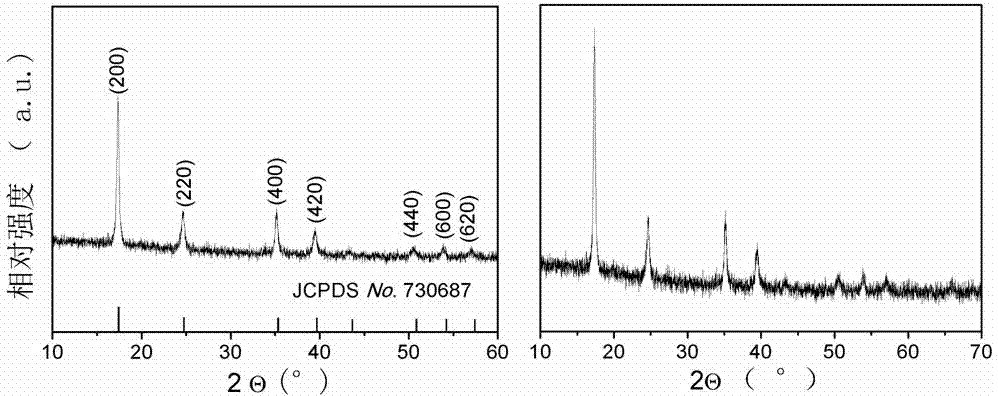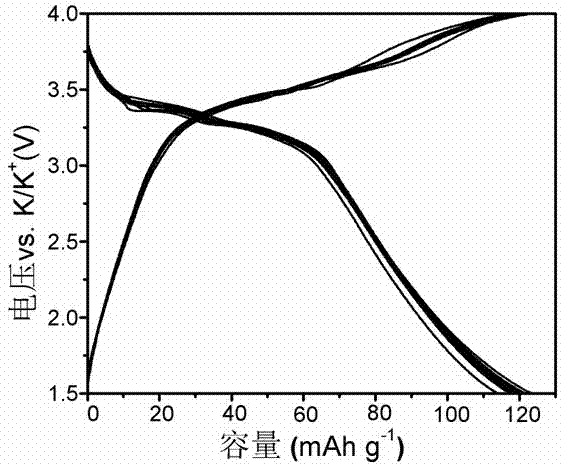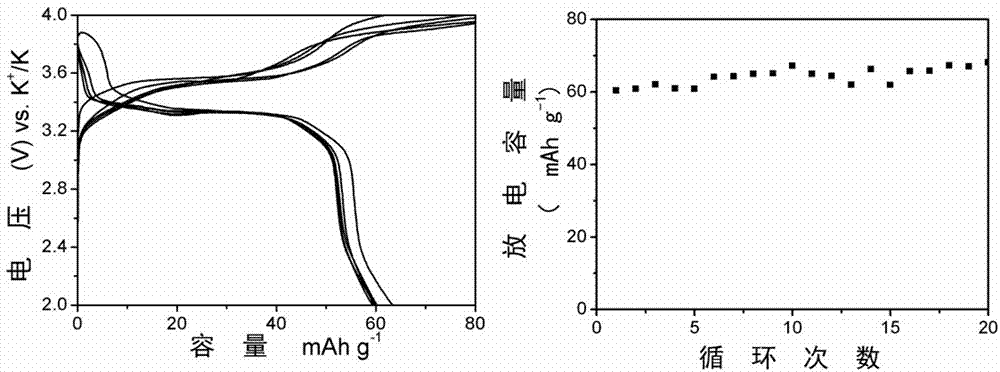Potassium/prussian blue secondary battery
A Prussian blue, secondary battery technology, applied in the field of electrochemistry, can solve the problems of large potassium ion radius and achieve good electrochemical performance
- Summary
- Abstract
- Description
- Claims
- Application Information
AI Technical Summary
Problems solved by technology
Method used
Image
Examples
Embodiment 1
[0022] Take FeFe(CN) 6 The powder is mixed with the conductive agent carbon fiber (VGCF) and the binder polyvinylidene fluoride (PVDF) at a mass ratio of 8:1:1, and N-methyl-2-pyrrolidone (NMP) is used as a solvent to form a slurry and evenly coated Clothed on the current collector Al foil, and then dried in a vacuum oven at 60 °C for 24 h, ready for use. With metal potassium sheet as the negative electrode, FeFe(CN) 6 Positive electrode, Celgrad 2325 as separator, 0.5mol L -1 Potassium hexafluorophosphate (KPF 6 ) / Ethylene Carbonate (EC): Dimethyl Carbonate (DEC) is used as the electrolyte to assemble the battery.
[0023] figure 1 .FeFe(CN) 6 and KFeFe(CN) 6 The powder X-ray diffraction pattern of the present example shows that the two Prussian blue electrode materials in this example are cubic crystals, belong to the Fm-3m space group, and there is no impurity in the two samples.
[0024] FeFe(CN) 6 The electrode material is charged and discharged at a current of 1...
Embodiment 2
[0027] Take KFeFe(CN) 6 The powder is mixed with the conductive agent carbon fiber (VGCF) and the binder polyvinylidene fluoride (PVDF) at a mass ratio of 8:1:1, and N-methyl-2-pyrrolidone (NMP) is used as a solvent to form a slurry and evenly coated Clothed on the current collector Al foil, and then dried in a vacuum oven at 60 °C for 24 h, ready for use. With metal potassium sheet as the negative electrode, KFeFe(CN) 6 Pole piece is the positive electrode, Celgrad2325 is the diaphragm, 0.5mol L -1 Potassium hexafluorophosphate (KPF 6 ) / Ethylene Carbonate (EC): Dimethyl Carbonate (DEC) is used as the electrolyte to assemble the battery.
[0028] The battery was charged and discharged at a current density of 100 mA / g, and the voltage range was 2.0-4.0 V.
[0029] image 3 , the charge-discharge curve and cycle performance diagram of KFeFe(CN) material show that the discharge / charge platform of the modified material is 3.4 and 3.5 V respectively, showing a small charge-dis...
PUM
 Login to View More
Login to View More Abstract
Description
Claims
Application Information
 Login to View More
Login to View More - R&D
- Intellectual Property
- Life Sciences
- Materials
- Tech Scout
- Unparalleled Data Quality
- Higher Quality Content
- 60% Fewer Hallucinations
Browse by: Latest US Patents, China's latest patents, Technical Efficacy Thesaurus, Application Domain, Technology Topic, Popular Technical Reports.
© 2025 PatSnap. All rights reserved.Legal|Privacy policy|Modern Slavery Act Transparency Statement|Sitemap|About US| Contact US: help@patsnap.com



